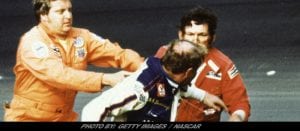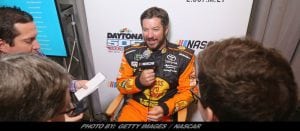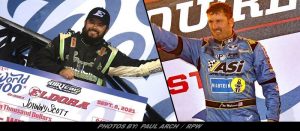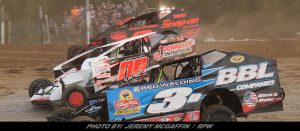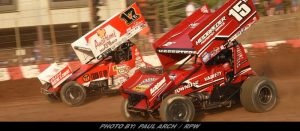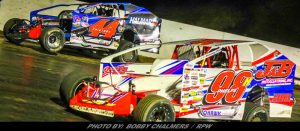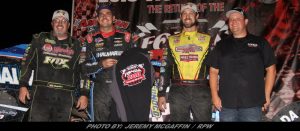Rapid Runs In ‘The Clash’ May Be A Good Omen For The Daytona 500
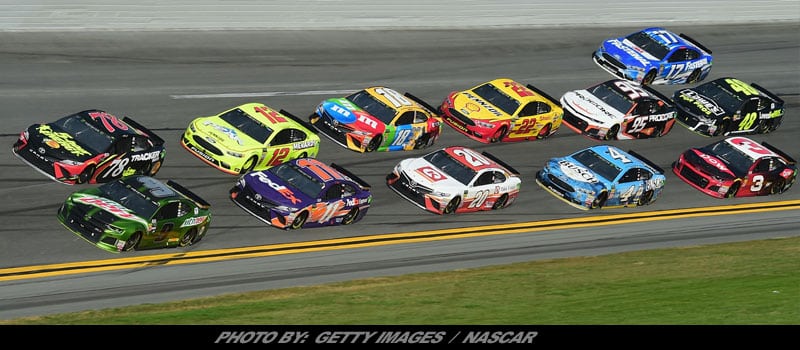

Column By: REID SPENCER / NASCAR – DAYTONA BEACH, FL – What fans saw in Sunday’s Advance Auto Parts Clash at Daytona International Speedway should constitute a promising look ahead to the Daytona 500 a week later.
Thanks to NASCAR’s elimination of the ride-height rules on superspeedways, the cars in the Clash were low-slung and dicey to control, with the rear spoilers much lower than in previous years. Closing rates were magnified, as runs developed quickly with enormous momentum.
“Yeah, I just think the runs happen quicker,” said Joey Logano, who finished second to Team Penske teammate Brad Keselowski. “It’s kind of like in the Xfinity race. In the Xfinity races, the cars get these huge runs, and they’re hard to stop. This is maybe not quite to that extent, but the runs you can build are way bigger than they used to be.
“But that bubble, that imaginary bubble in between the cars that we always talk about, seems to be stopping us just as hard. So we get a bigger run, but it kind of stops us just as much.”
But with runs developing more quickly, they will also be more difficult to block in next Sunday’s Daytona 500, making it harder to hold a lead in the Monster Energy NASCAR Cup Series opener.
On the other hand, drivers who had the misfortune to pull out of line without help were shuffled quickly to the back of the pack, in imminent of losing the draft.
That’s what happened to Kevin Harvick, who was dropped from the lead pack and finished ninth, 28.247 seconds behind race winner Keselowski.
“I just got myself in a couple bad spots by making moves and trying to do some things I didn’t need to be doing in a single-file race,” Harvick said. “It’s one of those things where I got myself in a bad spot, got up toward the front and then got shuffled back.
“I got to the back and tried to start playing around with things to try and make some progress. I went to pull up on the next-to-last car, and I slowed down so much that I lost the draft. I just made a mistake.”
CLASH CURSE CONTINUES FOR JIMMIE JOHNSON
At least Jimmie Johnson is getting closer.
On Sunday at Daytona International Speedway, Johnson made it to the last lap of the Advance Auto Parts Clash. He just didn’t make it to the checkered flag.
After contact from Kyle Larson’s No. 42 Chevrolet turned Johnson’s No. 48 into the outside backstretch wall, the seven-time champion failed to finish the exhibition race—for the seventh straight year. Johnson was credited with completing 74 of 75 laps in a 12th-place finish, but a DNF (did not finish) is a DNF.
“I had some contact from behind and we got turned into the outside wall,” Johnson said. “I haven’t had a chance to look at it and see what exactly happened, but the nose on our Chevy is pretty pointy. I was pushed by a Chevy, so I don’t know if that had something to do with it or not. I just need to get a good look at the replay.”
Johnson was running fourth at the time of the crash, having just lost the third spot to Kurt Busch. With a strong car for the bulk of the race, the Hendrick Motorsports driver enjoyed driving the new Camaro ZL1 race car under new NASCAR rules that lowered the bodies of the cars as close as possible to the asphalt.
The wreck was another matter.
“Yeah, I guess we’re the first real crash at speed with that (configuration),” Johnson said. “I kind of forgot about it once we got going. I think the cars look cool, and they’re going faster, which is more fun from our standpoint. It makes handling a little more of a premium.”
PIT STOP CHOREOGRAPHY IS STILL A WORK IN PROGRESS
In Sunday’s Advance Auto Parts Clash, Monster Energy NASCAR Cup Series teams got their first taste of pit stops with five over-the-wall crew members instead of the six allowed last year.
The new rules led to a variety of approaches, with the most prevalent featuring the tire carrier bring two tires over the wall at the same time. FOX Sports broadcasters credited Kurt Busch’s team with the fastest four-tire stop under the new rules at 16.95 seconds, a far cry from the sub-11-second stops that had become commonplace in NASCAR’s top series.
“A 16.9 is, obviously it’s quite a bit slower than what we’re used to,” said Paul Wolfe, crew chief for Clash winner Brad Keselowski. “And that’s just it—we’re not sure what to expect yet. And speedways are different, as well, from the mile and a half tracks.
“I mean, that’s pretty slow from what we’re used to, but you take one guy out of the equation, and some different (air) guns and things, and it all changes. I think, like I said, there’s going to be a lot of pit departments studying film and trying to understand different ways and ideas, and I think we’ll see this evolve a lot.
“I would expect to be quite a bit faster when we come back to Daytona in July. I would expect you’d see a good second or two shaved off of those times.”



